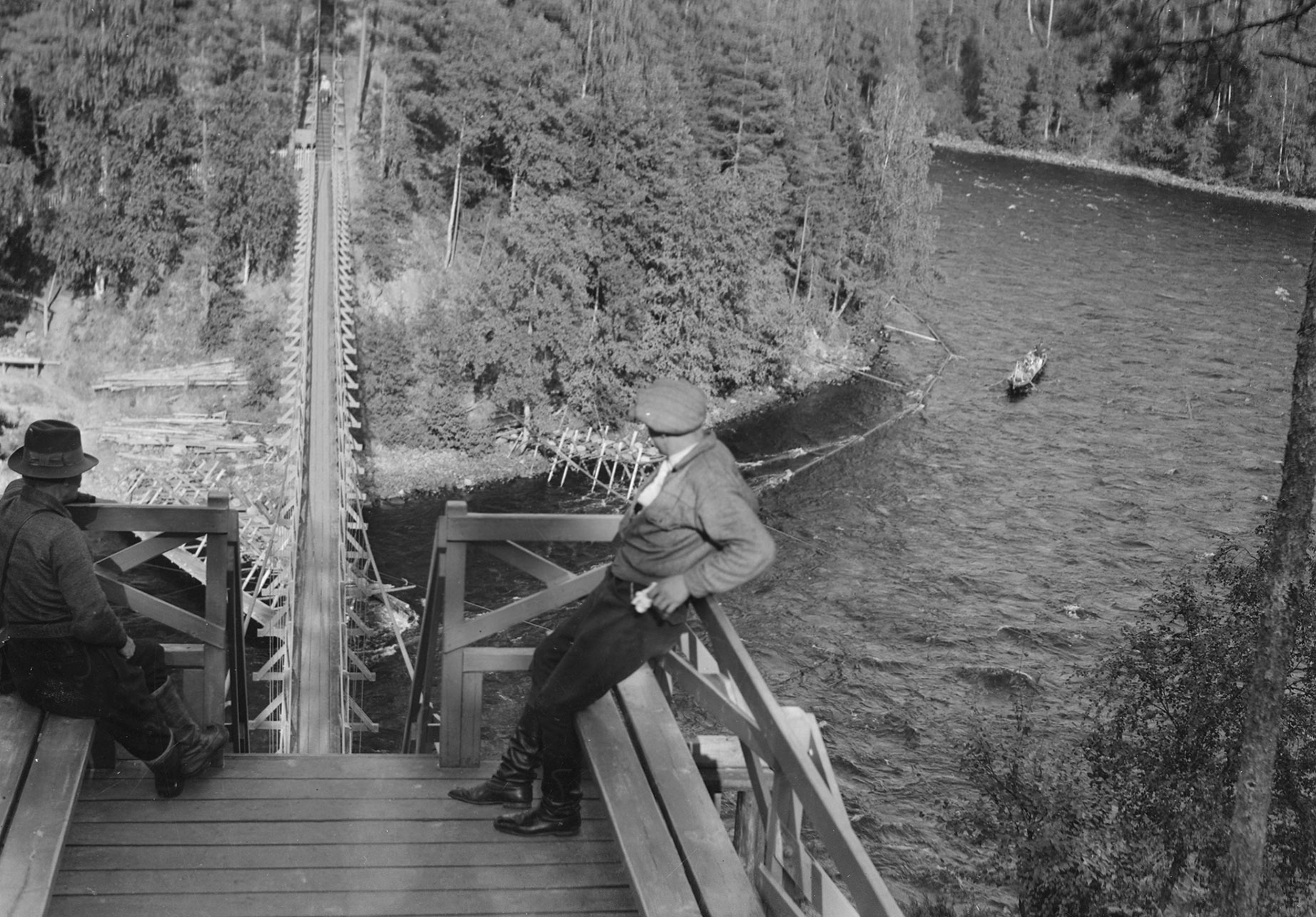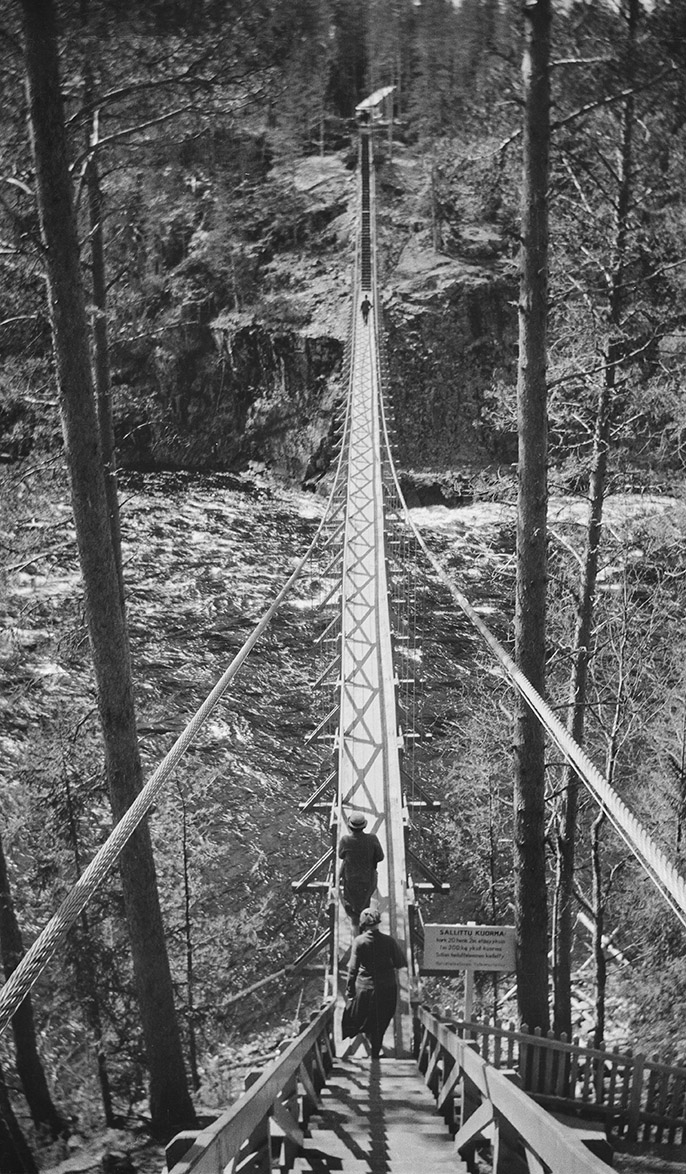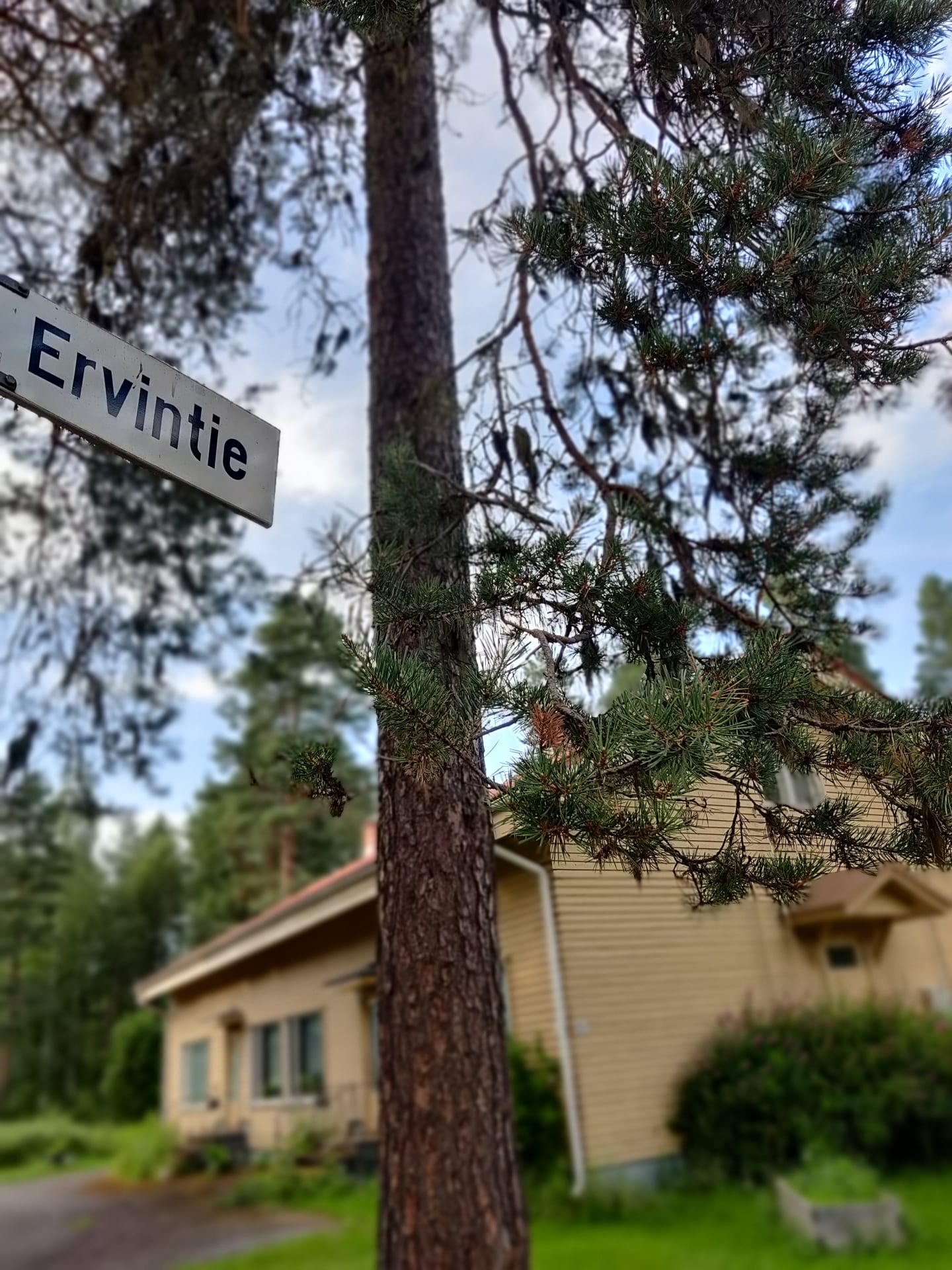Tourism on the River Oulujoki began in the early 19th century, when gentlefolk from Northern Ostrobothnia and elsewhere in Finland made boat trips to the Pyhäkoski area. They would bring dry food, coffee and wine, but not fish: they would get it fresh from the fishing spot at Leppiniemi House, where both whitefish and salmon could be easily caught.
Tourism in the area increased when a regular steamboat service from Oulu to Muhos started in the summer of 1880. Leppiniemi was also recommended in Finland’s first tourist guide. Finland’s first established tourist route from Vyborg via Saimaa and Kainuu to Oulu was via the Pyhäkoski Rapids in Leppiniemi.
Pyhäkoski’s picturesque river scenery and sparkling rapids attracted a considerable number of river tourists. A suspension bridge was built twenty metres above the river from the Leppiniemi farm to the Rakankallio rock, and the Finnish Tourist Board built a restaurant high on the riverbank. Riverboats began to stop at Leppiniemi so that passengers could walk along the bridge and enjoy the view of the boats and the fishing. Tourists could also explore a nearby cave via a stone staircase.



